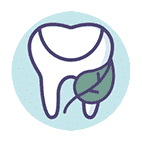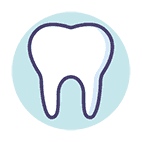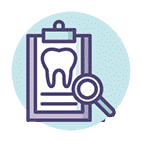Total Health Dentistry
for Young Adults
While young adulthood is typically a time of few dental appointments, it’s a period in one’s life where cosmetics and physical appearance are most important.
While a young adult’s budget may be limited, it’s still possible to achieve a healthy mouth, teeth and gums with Total Health Dentistry.

How's Your Smile?

Working On Your Vibrant Smile
Many young adults agree that a healthy, vibrant smile is one of their most important assets. While a healthy smile may be aesthetically pleasing, it also contributes to your total health.
Whether you’re looking to lead a healthier lifestyle, improve your appearance or looking for companionship, it all starts with a healthy smile!
A Healthy Smile Starts With:
A healthy smile comes down to a few key factors:
HINT: If you were thinking of colour and shade, you’re only part of the way there.
- Proportions
- Facial Profile
- Teeth Shade and Alignment
Proportions
The proportions of your gums, smile line, face, jaw, and neck all play a key role in establishing a beautiful-healthy smile. We call these the golden proportions.
Is Your Smile In Golden Proportions?
Are your teeth crooked? Do you have black spots or discolouration on your teeth? Do you have a comfortable bite?
If there’s nothing obviously crooked or black, and you’re still not happy with your smile, there may be some dis-proportions.


Facial Profile
While facial profile is rarely talked about in dentistry, it’s a huge topic and contributor when it comes to vibrant, healthy and naturally beautiful smiles.
Facial Profile Surgery Is NOT Needed:
While facial profile surgery is still an option to change one’s appearance, it’s often not necessary!
When a person has a great airway, nutrition and structure, they’re already on the path of golden facial profile proportions.
Researching and considering Airway Focused Braces can considerably improve your facial profile.
Shade and Alignment
The shade and alignment of teeth are usually the first aspect of a healthy and beautiful smile that people think about.
While shade and alignment are important factors of a healthy smile, there’s much more to understand.
How to Improve Your Shade and Alignment:
Improving the Shade of Your Teeth:
- Avoid foods that can stain your teeth!
- DIY tooth whitening with activated charcoal.
- Over the counter products using 10% Carbamide Peroxide or 8% Hydrogen Peroxide.
Improving Teeth Alignment:
- Traditional braces vs. Airway focused braces
- Invisible or ceramic bracket braces.
Note: Please don’t forget about your airway. Don’t straighten your teeth at the cost of closing or narrowing your arch, restricting your airway and tongue!

Understanding Early Alarm Bells
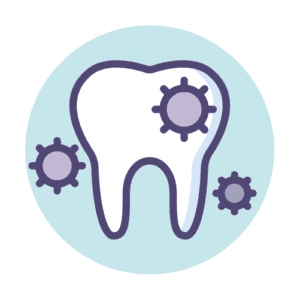
Addressing Early Warning Signs
During early and young adulthood, it’s important to be vigilant in addressing early signs of diminished dental health.
While the full extent of damage might not be super evident, it will be in 1 to 2 decades. It’s important to correct early warning signs, so they do not derail the total health of the patient.
What's Comfortable Bite Treatment?
Do you have a comfortable bite? Here are some early signs that your bite may not be as comfortable as you think:
- Excessive teeth grinding.
- The tops of molars eroding.
- Lost enamel.
If you experience any of these early warning signs, you might have an uncomfortable bite. The good news? Sante Family Dental can help!
Our team has extensive Comfortable Bite Treatments that include:
- Porcelain build-ups
- Braces
- Dentures
- and more!
For more information on methods that improve facial structure – including before & after photos, visit these pages:
Frequently Asked Questions
The Sante Family Dental team is here to support you in your Total Health Dentistry. We’ve assembled some of our most Frequently Asked Questions for early and mid-adulthood so that you can rest assured that the answers you need are available when you need them.
Young Adult Dentistry FAQ
From kid to teenager, it’s not uncommon to have stained teeth, usually looking yellow or darker than normal. These stains are generally just surface stains and can be easily whitened at home.
A great DIY whitener is activated charcoal and water. All you do is create a paste with a whip cream consistency, then brush it away. Plus, if your kids make a mess with it, it washes out of all clothing!
Although many use hydrogen peroxide to whiten their teeth—and it works—we suggest using carbamide peroxide if you can. Be sure not to go over 10% of concentration for carbamide, and not over 8% for hydrogen.
This depends on how big the filling is.
If the filling used was small and less than half of the tooth, all three options can work well (plastic, porcelain, gold). If you are looking for longevity, plastic fillings will only hold for 6 to 8 years on average, whereas porcelain or gold will hold over 6 to 8 years.
If you have enough room in your mouth for your wisdom teeth to grow in without disrupting your airway and leaving you more than enough room to clean around them for the rest of your life (70-80 years!), then no, you don’t necessarily have to have them removed.
However, this is uncommon in this day in age. In most cases, our jaws simply just don’t grow large enough to allow our wisdom teeth to come in well enough to clean them. So, yes, in the majority of cases, you will have to have your wisdom teeth removed at some point in your life. We’d highly suggest having this done before your wisdom teeth are fully developed to reduce pain and discomfort.
While in some case it makes sense to remove all four wisdom teeth at the same time, it’s actually easier on you to have the lower wisdom teeth removed earlier, whereas the upper wisdom teeth are better to remove later.
Lower wisdom teeth generally are easier to remove between 14-16 years old, before the roots have fully formed. Upper wisdom teeth are easier to remove in your early 20s with minimal recovery time.
First, we start with a trial bite made out of plastic teeth. This is then built over the patient’s existing teeth. The trial bite typically stay in for 3 to 6 months while we tweak and find the most comfortable bite for the patient. Then, once we’ve found the comfortable bite, we convert the plastic crowns into porcelain crowns or covers.
To put it simply, airway focused braces are where we work to straighten your teeth as well as open the airway by addressing the underlying issue of your crowded teeth.
This is most often done in two phases.
- Using “pre-aligners”, we address any number of muscles or habits that are causing the crowding. We also address nutrition, looking at foods that could cause low-grade inflammation of the adenoid, tonsils and sinuses (among other things) that could be causing your muscles to compensate.
- Once we’ve addressed the underlying issue, we’ll reassess your airway, bite and appearance of your teeth. If all these check out, you don’t need braces! However, if we still want to improve the bite and overall appearance of your teeth, we’ll move forward with braces knowing that we’ve already corrected the underlying issue.
A root canal procedure is very common when approaching middle age. A root canal is when the soft tissue inside the root becomes inflamed or infected with bacteria. The inflammation or infection can have a variety of causes such as when there is an injury to the tooth or an untreated cavity. If you experience the following symptoms, you may need to have your mouth assessed.
- Severe tooth pain upon chewing or pressure
- Sensitivity to hot and cold temperatures
- Discolouration of the tooth
- Swelling and tenderness of the gums




